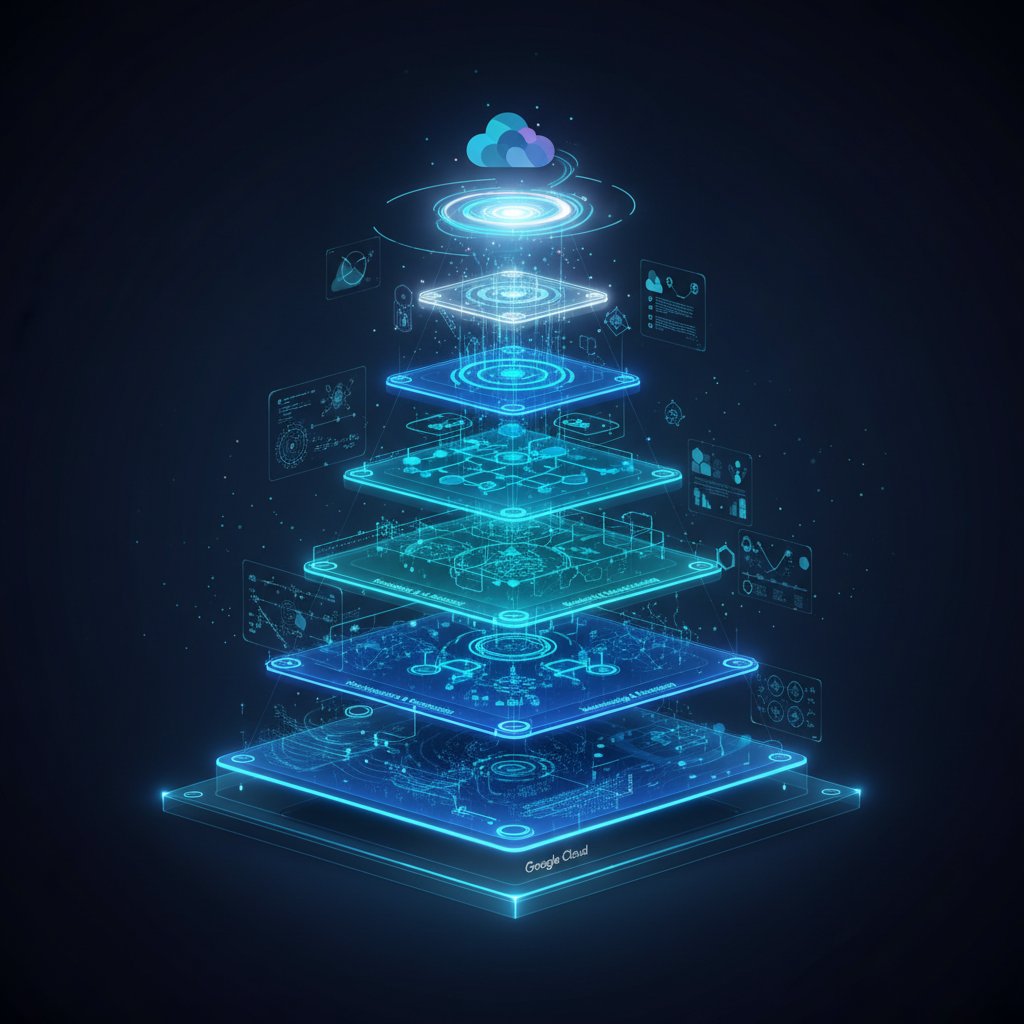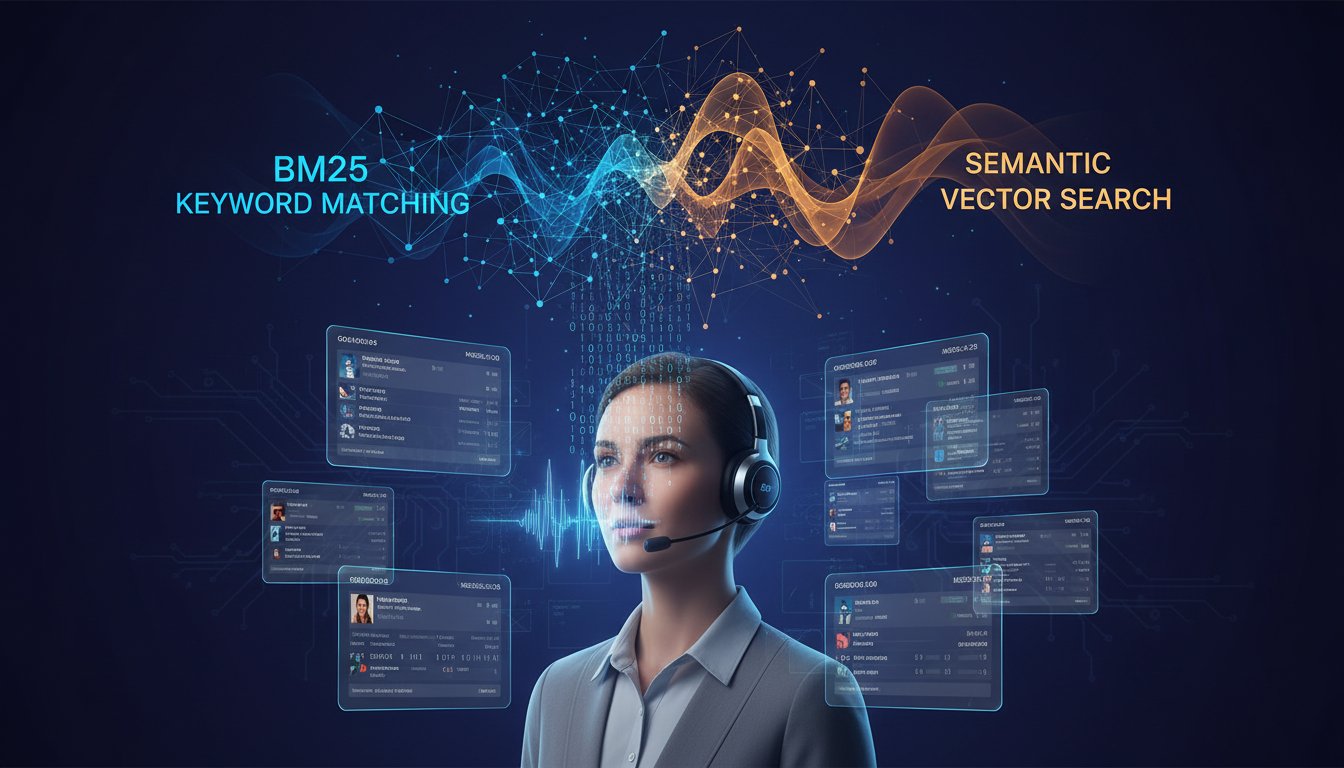The AI landscape just experienced a seismic shift. In November 2025, Google Cloud released a comprehensive 54-page technical guideline titled “Introduction to Agents” that fundamentally redefines how enterprises approach artificial intelligence. This isn’t just another incremental improvement—it’s a complete paradigm shift from passive AI systems to autonomous agents capable of reasoning, planning, and executing complex tasks independently.
For enterprise AI teams working with Retrieval-Augmented Generation (RAG) systems, this framework represents the most significant advancement since the introduction of transformer architectures. The implications extend far beyond simple chatbots or document retrieval systems. We’re talking about AI agents that can collaborate in teams, create their own tools, and evolve autonomously while maintaining enterprise-grade security and governance.
What makes this particularly compelling is the timing. With the agentic AI market projected to reach $1 trillion by 2035-2040 and over 90% enterprise adoption anticipated within three years, Google Cloud has positioned itself at the forefront of this transformation. Early adopters are already reporting a 46% increase in content creation speed and a 32% efficiency boost in editing tasks.
In this deep dive, we’ll examine the technical architecture of Google Cloud’s agentic framework, explore how it integrates with existing RAG systems, and provide a practical implementation roadmap for enterprise teams. Whether you’re running basic document retrieval systems or sophisticated multi-modal AI applications, this framework will fundamentally change how you approach AI development and deployment.
The 5-Level Taxonomy: From Basic Reasoning to Self-Evolving Systems
Google Cloud’s agentic AI framework introduces a revolutionary five-level taxonomy that provides a clear progression path from simple language models to fully autonomous AI systems. This structured approach addresses one of the biggest challenges in enterprise AI: understanding where your current systems fit and how to evolve them strategically.
Level 0: Basic Reasoning Systems
At the foundation level, we have isolated language models with no external interaction capabilities. These systems handle basic reasoning tasks but operate in complete isolation from external data sources or tools. Most traditional RAG systems that simply retrieve and synthesize information fall into this category.
For enterprise teams, Level 0 represents the starting point for most current implementations. While these systems can process and generate responses based on retrieved documents, they lack the ability to take actions or interact with external services.
Level 1: Tool-Enabled Agents
Level 1 agents gain access to external tools like APIs, search services, and databases. This is where most modern RAG systems begin to show their true potential. These agents can retrieve information from vector databases, call external APIs, and integrate data from multiple sources.
The Vertex AI RAG Engine exemplifies this level, enabling agents to connect with enterprise data stores, vector databases, and external services through standardized APIs. The key advancement here is the agent’s ability to decide which tools to use based on the context of the request.
Level 2: Multi-Step Planning Agents
Level 2 introduces sophisticated planning capabilities for complex, multi-step tasks. These agents can break down complex requests into smaller subtasks, execute them in sequence, and adapt their approach based on intermediate results.
In the context of enterprise RAG systems, Level 2 agents might analyze a complex business question, identify the required data sources, retrieve information from multiple systems, synthesize findings, and generate actionable recommendations—all autonomously.
Level 3: Multi-Agent Collaboration
Level 3 represents a paradigm shift toward collaborative AI systems. Multiple specialized agents work together, resembling human teams with different expertise areas. One agent might specialize in financial data analysis, another in market research, and a third in regulatory compliance.
This level addresses the scalability challenges that plague traditional RAG systems. Instead of building monolithic systems that try to handle everything, enterprises can deploy specialized agent teams that collaborate to solve complex problems.
Level 4: Self-Evolving Agents
The pinnacle of the framework features self-evolving agents capable of creating new tools, spawning sub-agents, and continuously improving their capabilities. These systems represent the future of enterprise AI—agents that can adapt to new business requirements without human intervention.
While Level 4 agents are still largely theoretical, Google’s framework provides the architectural foundation for their eventual implementation.
Core Architecture: The Brain, Hands, and Nervous System
Google Cloud’s agentic framework is built around three fundamental components that work in harmony to create truly autonomous AI systems. Understanding these components is crucial for enterprise teams planning their RAG system evolution.
The Model: The Agent’s Brain
The model serves as the agent’s cognitive center, handling reasoning and decision-making based on learned patterns and real-time context. Unlike traditional RAG systems that simply match queries to documents, agentic models can understand intent, plan multi-step solutions, and adapt their approach based on changing conditions.
In practice, this means your RAG system evolves from a sophisticated search engine into a reasoning partner capable of understanding complex business contexts and making strategic decisions.
Tools: The Agent’s Hands
Tools enable agents to interact with the external world through APIs, databases, search services, and other systems. The Vertex AI ecosystem provides pre-built integrations with major enterprise systems, but the framework also supports custom tool development.
For enterprise RAG implementations, this component is revolutionary. Instead of being limited to document retrieval, agents can interact with CRM systems, databases, external APIs, and even other AI services to gather and process information.
Orchestration Layer: The Nervous System
The orchestration layer coordinates context management, memory systems, and strategic planning across tasks. This component ensures that agents maintain coherent behavior across extended interactions and can learn from previous experiences.
This addresses one of the biggest limitations of traditional RAG systems: the lack of persistent context and learning capabilities. With proper orchestration, your AI agents can build up institutional knowledge and improve their performance over time.
The Operational Workflow: Mission to Iteration
Google’s framework defines a five-step operational cycle that enables continuous learning and adaptation:
Get the Mission: Agents receive and interpret complex, multi-faceted requests that may require extensive planning and resource coordination.
Scan the Scene: Comprehensive environmental assessment, including available tools, data sources, system constraints, and current context.
Think It Through: Strategic planning phase where agents decompose complex tasks, identify required resources, and develop execution strategies.
Take Action: Execution of planned activities, including tool usage, data retrieval, analysis, and synthesis.
Observe and Iterate: Performance assessment, outcome evaluation, and strategy refinement for future iterations.
This cycle represents a fundamental shift from the request-response pattern of traditional RAG systems to a continuous learning and improvement model.
Enterprise Integration: Vertex AI Agent Builder and RAG Engine
Google Cloud has made the transition to agentic AI remarkably practical through the Vertex AI Agent Builder and the recently updated RAG Engine. These tools provide enterprise-ready implementations of the agentic framework without requiring extensive custom development.
Vertex AI Agent Builder
The Agent Builder platform empowers enterprises to rapidly build, scale, and govern enterprise-grade agents. It provides pre-configured templates, deployment automation, and comprehensive observability tools that address the operational challenges of running AI agents in production.
Key enterprise features include:
- Centralized agent governance and policy management
- Built-in security controls with defense-in-depth protections
- Agent identity management using SPIFFE standards
- Comprehensive monitoring and anomaly detection
- Automated scaling based on demand
RAG Engine Integration
The Vertex AI RAG Engine has been enhanced to work seamlessly with the agentic framework. The Agent Starter Pack provides a pre-configured template that accelerates the transition from prototype to production by handling infrastructure and operational concerns.
Implementation involves several key steps:
# Enable required APIs
gcloud services enable aiplatform.googleapis.com discoveryengine.googleapis.com cloudbuild.googleapis.com
# Create RAG corpus and upload enterprise documents
# Configure environment with backend choice and corpus references
# Deploy via automated scripts
make deploy
The integration supports real-time retrieval and grounding, enabling agents to access enterprise data while maintaining security and compliance requirements.
Enterprise Security and Governance
One of the most impressive aspects of Google’s framework is its comprehensive approach to enterprise security and governance. The system includes:
- Defense-in-depth protections with multiple security layers
- Agent identity management using industry standards like SPIFFE
- Centralized control planes for oversight and policy enforcement
- Transparent agent registries for tracking and auditing
- Compliance-ready environments that meet regulatory requirements
Performance Impact: Real-World Results
Early enterprise adopters of Google’s agentic framework are reporting significant performance improvements across multiple metrics:
- 46% increase in content creation speed through autonomous research and synthesis
- 32% efficiency boost in editing tasks via intelligent collaboration between human editors and AI agents
- Reduced time-to-insight for complex business analysis tasks
- Improved accuracy through multi-agent verification and validation processes
Interoperability and Ecosystem Integration
The framework includes sophisticated interoperability protocols like Agent2Agent that enable seamless collaboration across diverse AI agents. Transaction mechanisms such as the Agent Payments Protocol ensure secure, verifiable interactions between agents from different vendors or departments.
This addresses a critical challenge in enterprise AI: vendor lock-in and system fragmentation. With standardized protocols, enterprises can build heterogeneous agent ecosystems that combine best-of-breed solutions while maintaining operational coherence.
Implementation Roadmap: From RAG to Agentic AI
For enterprise teams ready to transition from traditional RAG systems to agentic AI, Google’s framework provides a clear migration path:
Phase 1: Assessment and Planning
Begin by evaluating your current RAG systems against the five-level taxonomy. Most enterprise systems will fall into Level 0 or Level 1. Identify specific use cases where agentic capabilities would provide the most value.
Key questions to consider:
– Which business processes require multi-step reasoning?
– Where would autonomous tool usage provide significant value?
– What data sources need to be integrated beyond traditional documents?
Phase 2: Tool Integration
Upgrade existing RAG systems to Level 1 by integrating external tools and APIs. The Vertex AI ecosystem provides pre-built connectors for major enterprise systems, significantly reducing development time.
Focus on:
– API integrations with critical business systems
– Custom tool development for specialized workflows
– Security configuration and access control
Phase 3: Planning Capabilities
Enhance agents with multi-step planning capabilities to reach Level 2. This involves implementing the five-step operational workflow and enabling agents to decompose complex tasks autonomously.
Phase 4: Multi-Agent Deployment
Develop specialized agent teams for different business functions. This phase requires careful orchestration and governance to ensure agents collaborate effectively.
Phase 5: Continuous Evolution
Implement monitoring, evaluation, and improvement systems that enable agents to learn and adapt over time. This includes setting up Agent Gyms for offline testing and implementing continuous feedback loops.
The Future of Enterprise RAG: Beyond Retrieval
Google Cloud’s agentic AI framework represents more than just an evolutionary step—it’s a fundamental reimagining of what enterprise AI systems can accomplish. The shift from passive retrieval to active reasoning and autonomous action opens up possibilities that were previously limited to science fiction.
The implications for enterprise RAG systems are profound. Instead of simply finding and presenting information, your AI systems will be capable of:
- Conducting autonomous research across multiple data sources
- Performing complex analysis and generating actionable insights
- Coordinating with other AI agents to solve multifaceted problems
- Learning from experience and improving performance over time
- Adapting to changing business requirements without human intervention
With over 90% enterprise adoption anticipated within three years and a projected market value of $1 trillion by 2035-2040, the transition to agentic AI isn’t just an opportunity—it’s an imperative. Organizations that fail to evolve their AI capabilities risk being left behind in an increasingly AI-native business landscape.
The technical foundation is already in place. Google Cloud’s framework provides the architectural blueprint, while Vertex AI Agent Builder offers the practical tools needed for implementation. The question isn’t whether to make the transition, but how quickly your organization can evolve from traditional RAG systems to truly autonomous AI agents.
For enterprise AI teams, the time to start planning this transition is now. Begin by assessing your current systems against Google’s five-level taxonomy, identify high-value use cases for agentic capabilities, and start building the technical and organizational capabilities needed to deploy autonomous AI agents at scale. The future of enterprise AI is autonomous, collaborative, and continuously evolving—and it’s already here.




